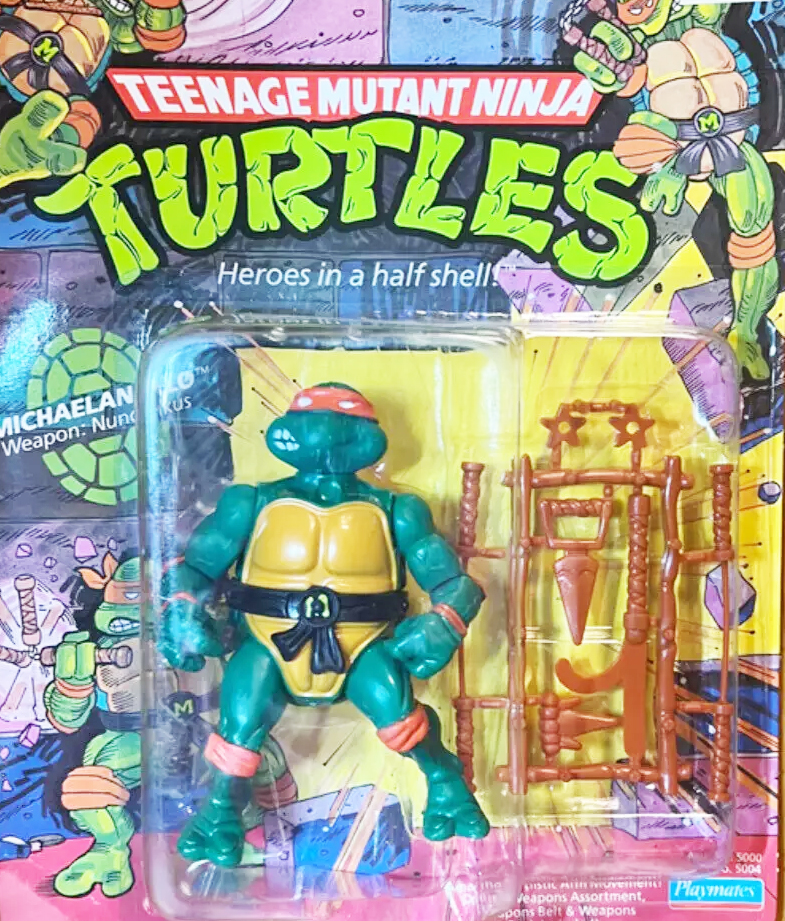Teenage Mutant Ninja Turtles went from indie parody to mainstream monolith in a few short years—comic shop black-and-white to Saturday-morning staple to one of the most expansive action-figure ecosystems of the late ’80s and early ’90s. The secret sauce: a perfect loop of cartoon ⇄ toy line, plus designs that baked personality into every sculpt.
From Comic Book to Sensation
Kevin Eastman and Peter Laird’s 1984 comic started as a wry riff on gritty superhero tropes—four mutated turtles trained by Splinter, their rat sensei. In 1987 Playmates launched the TMNT figures in tandem with a kid-friendly animated series, igniting a craze that made Power Rangers and others chase the same TV-to-toy playbook a few years later.
The Figures That Defined a Decade
The core quartet arrived with distinct looks and loadouts: Leonardo (katanas), Raphael (sais), Donatello (bo staff), Michelangelo (nunchucks). Sculpted expressions, slightly different skin tones, and sturdy bodies made them perfect for rugged play. Allies (Splinter, April, Casey) and villains (Shredder, Bebop, Rocksteady, Krang) quickly rounded out the bench.
Vehicles & Playsets: Building the Turtleverse
Playmates understood the power of world-building. The Party Wagon became an instant icon, while sewer lairs and booby-trap accessories turned floors into full-blown dioramas. This “figures + vehicles + playsets” model followed the blueprint set by Kenner’s Star Wars and refined by G.I. Joe and MOTU.
Variants, Waves, and the Wild Stuff
To keep aisles fresh, Playmates leaned into creative sublines: military outfits, sports gear, space suits—plus quirky crossovers like the Universal Monsters Turtles. The result was a mix of serious shelf power and Saturday-morning humor that rewarded repeat trips to the toy aisle.
Beyond Toys: TV, Movies, and Cultural Reach
The 1987–1996 cartoon dialed down the comic’s grit but doubled the charm—pizza jokes, teamwork morals, and plenty of Shredder antics. The 1990 live-action film (and sequels) proved the brand’s mainstream pull, while later revivals in the 2000s and 2010s kept new waves of kids—and collectors—engaged.
Collector Notes
- Completeness matters: check belts, throwing stars, and tiny weapons trees; missing bits ding value.
- Vehicles/playsets: verify launchers/doors on Party Wagon and sewer lairs; small clips love to vanish.
- Pegs & paint: joint stress and paint rubs show up fast on vintage Turtles—ask sellers for close-ups.
- Storage: avoid heat/sun; bag accessories; stands help with shelf dives.
Legacy
TMNT proved that strong character design plus a robust ecosystem can dominate for generations. If you’re mapping 80s→90s toy evolution, put Turtles alongside engineering-forward lines like Transformers G1 and combiners like Voltron—different vibes, same shelf domination.
